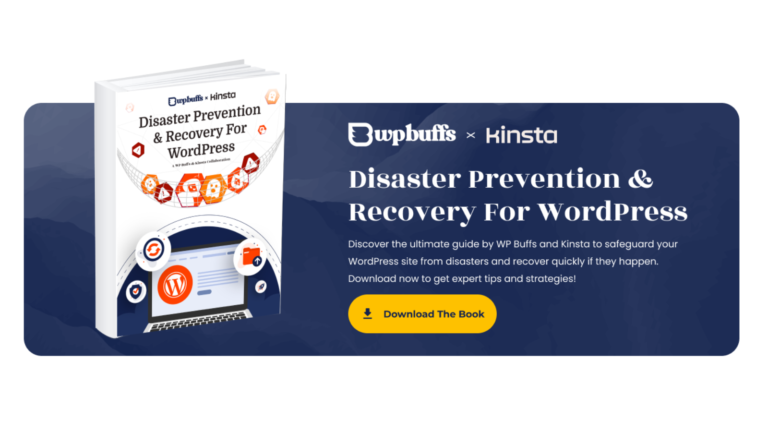Python is a versatile programming language that has gained immense popularity in the world of web development. From its user-friendly syntax to its seamless integration with other languages, Python offers a wide range of advantages for creating websites.
We will explore the various benefits of using Python for web development, including its role in artificial intelligence and machine learning. Whether you are a beginner looking to learn the basics of Python programming or a seasoned developer seeking to enhance your website’s functionality, Python has something to offer for everyone.
Key Takeaways:
Contents
- 1 Key Takeaways:
- 2 What is Python?
- 3 Advantages of Using Python for Web Development
- 4 Why Choose Python for Your Website?
- 5 Learning the Basics of Python Programming
- 6 Next Steps After Learning Python
- 7 Frequently Asked Questions
- 7.1 What is Python and why would you want to use it for your website?
- 7.2 How is Python different from other programming languages?
- 7.3 What are the benefits of using Python for website development?
- 7.4 Can Python be used for both front-end and back-end development?
- 7.5 Is learning Python difficult for beginners?
- 7.6 What are some popular websites that use Python?
- Python is a versatile and powerful programming language with a user-friendly and readable syntax, making it a great choice for building websites.
- With its extensive documentation and strong community, Python offers support and resources for web development, including integration with different languages and AI/ML capabilities.
- Python offers advantages for web development, such as app scripting and testing, server-side scripting, scalability and adaptability, prototyping, web scraping, and seamless integration with other languages.
What is Python?
Python is a versatile programming language widely used in software development, data analytics, and various other domains due to its flexibility and robust capabilities.
Its ease of use and extensive libraries make Python a preferred choice for developers working on web development, scientific computing, and automation tasks. In the realm of data analytics, Python is instrumental in data exploration, visualization, and manipulation, enabling businesses to derive valuable insights from large datasets efficiently.
- Python’s integration with popular machine learning libraries such as Scikit-learn and TensorFlow has revolutionized the field of artificial intelligence by providing accessible tools for building and deploying complex models.
- Frameworks like Django and Flask further enhance Python’s capabilities by facilitating rapid development of web applications, making it a go-to language for building scalable and robust software solutions.
Overview and Introduction
Python is an Object-Oriented programming language known for its readability and extensive support through platforms like Anaconda. It has different implementations such as CPython, Jython, and RubyPython, and is compatible with various systems including MacBook Pro.
Python’s versatility as an Object-Oriented language allows developers to create modular and reusable code, enhancing efficiency and scalability in projects. Its dynamic typing and binding features make it an ideal choice for rapid application development. With versions like Python 2.x and Python 3.x, the language offers backward compatibility while promoting the adoption of newer improvements in syntax and features.
Developers often choose Python for its rich libraries and frameworks, such as NumPy, Django, and TensorFlow, which streamline various tasks from data manipulation to web development. Python’s popularity is further amplified by its integration with development environments like PyCharm and Visual Studio Code, providing robust tools for coding, debugging, and testing. Python’s support for multi-paradigm programming allows flexibility in adopting procedural, functional, or Object-Oriented methodologies based on project requirements.
Advantages of Using Python for Web Development
Using Python for web development offers numerous advantages, especially with popular frameworks like Django and Flask that streamline backend processes while ensuring seamless integration with HTML, JavaScript, and various APIs.
Python’s efficiency in web development lies in its ability to work cohesively with robust frameworks such as Django and Flask, which simplify complex backend tasks and accelerate the development process. Python’s compatibility with frontend technologies, like HTML and JavaScript, allows developers to create dynamic and interactive web applications seamlessly.
One of the key benefits of Python for web development is its exceptional API integration capabilities, facilitating the seamless communication between different software systems and enhancing overall functionality and scalability. By leveraging Python’s backend capabilities, developers can build scalable and high-performance web applications that cater to varying user needs and business requirements effectively.
Integration with Different Languages
Python’s versatility extends to seamless integration with other languages like Ruby and PHP, allowing developers to combine different technologies for enhanced functionality and performance.
When leveraging Python’s compatibility with Ruby, developers can benefit from Ruby’s clean syntax and object-oriented programming paradigm. On the other hand, integrating Python with PHP opens up possibilities for web development projects, with PHP’s server-side scripting capabilities complementing Python’s versatility. This cross-language compatibility enables teams to work on diverse project requirements by utilizing the strengths of each language effectively.
Extensive Documentation
Python boasts extensive documentation that includes a rich collection of libraries and frameworks, providing developers with comprehensive resources to streamline their projects and enhance code quality.
This vast array of tools caters to various development needs, from data manipulation and analysis to web development and machine learning. Python’s documentation not only covers basic programming concepts but also delves into advanced topics like data structures and algorithms.
The availability of APIs further facilitates seamless integration of external services, enabling developers to create powerful and efficient applications with ease.
Strong Python Community
The Python community, exemplified by platforms like Adeva, is a vibrant and supportive network of developers who contribute to open-source projects, share knowledge, and foster innovation in Python programming.
These developers collaborate on a multitude of projects, ranging from web development to data analytics to AI applications. The community thrives on the exchange of ideas and the collective effort to push the boundaries of Python’s capabilities. Platforms like Adeva serve as hubs for these collaborations, connecting developers from around the world to work together on cutting-edge technologies.
What sets the Python community apart is its commitment to inclusivity and learning. Developers of all skill levels, from beginners to seasoned professionals, actively participate in discussions, code reviews, and mentorship programs, creating a rich and dynamic ecosystem for knowledge sharing.
User-Friendly and Readable Syntax
Python’s user-friendly and readable syntax simplifies coding tasks, making it an ideal choice for beginners and experienced developers alike. Its elegance is particularly useful for web-scraping applications.
The simplicity of Python allows developers to express concepts in fewer lines of code compared to other programming languages, contributing to its reputation for clarity and efficiency. This makes it easier to understand and maintain, even for complex projects. Python’s versatility goes beyond web-scraping, extending into fields such as machine learning and integration with other technologies seamlessly.
Python’s Role in Artificial Intelligence and Machine Learning
Python plays a pivotal role in driving advancements in Artificial Intelligence and Machine Learning, offering powerful libraries and frameworks that enable developers to create sophisticated AI models and algorithms.
One of the key reasons why Python is widely used in the AI and Machine Learning domains is its rich set of data structures and libraries like NumPy, pandas, and scikit-learn, which provide efficient tools for handling and analyzing data. Python’s versatility also extends to the backend, where its robust capabilities support the development of complex neural networks and deep learning algorithms that are essential for cutting-edge AI applications. Its seamless integration with frameworks like TensorFlow and PyTorch further solidifies Python’s position as the language of choice for creating innovative solutions in the field of AI.
Why Choose Python for Your Website?
Choosing Python for your website provides a solid foundation for backend and frontend development, with scalable code architecture that enables rapid prototyping and seamless integration of new features.
Python’s versatility in web development is exemplified by its powerful capabilities for both backend and frontend tasks. With numerous libraries and frameworks, Python makes it easy to build robust APIs and handle complex data efficiently. Python’s elegant syntax and readability allow developers to prototype and iterate quickly, saving time and effort in the development process.
Regarding scalability, Python shines with its ability to handle heavy loads and traffic without compromising performance. Integrating JavaScript with Python for frontend tasks ensures a dynamic and interactive user interface, enhancing the overall user experience of your website.
App Scripting and Testing
Python facilitates efficient app scripting and testing processes, enableing developers to automate tasks, streamline workflows, and conduct comprehensive testing for robust application performance.
Its adaptability and extensive library support make it a versatile tool for a wide range of scripting needs, enabling developers to create custom solutions tailored to specific requirements. Python’s seamless integration with various APIs further enhances its capability in interacting with different systems and services, making it an ideal choice for building efficient automated workflows.
Python’s clean and readable syntax simplifies the process of writing and maintaining scripts, reducing the time and effort required for development and testing activities. This not only improves productivity but also ensures a high level of code quality and reliability in application testing.
Server-Side Scripting Capabilities
Python excels in server-side scripting, offering adaptability and robust capabilities to handle complex server operations efficiently and effectively.
One of the key strengths of Python in server-side scripting lies in its versatility to seamlessly work together with numerous data analytics tools and libraries.
Developers can leverage Python’s rich ecosystem to collect, process, and analyze vast amounts of data, making it an ideal choice for data-centric server applications.
Python’s extensive frameworks like Django, Flask, and Pyramid provide ready-to-use templates and tools for building scalable and secure server-side applications, reducing development time and enhancing overall productivity.
Scalability and Adaptability
Python’s scalability and adaptability make it a preferred choice for projects of all sizes, enabling developers to create prototypes, scale applications seamlessly, and adapt to changing requirements efficiently.
One of the key strengths of Python lies in its ability to handle differing project scales with ease. From small-scale prototypes to large-scale applications, Python’s flexibility shines through, making it a versatile tool for developers.
When working with Python, developers have access to a wide range of data structures that help in optimizing code and improving efficiency. Whether it’s lists, dictionaries, or tuples, Python provides a robust set of tools to manage and manipulate data effectively.
Python’s compatibility with JavaScript opens up a world of possibilities for web developers. The seamless integration of Python and JavaScript allows for dynamic web pages and interactive user experiences, enhancing the overall functionality of web applications.
Prototyping with Python
Python’s prototyping capabilities enable developers to quickly create and test project ideas, facilitating swift iteration and validation of concepts before full-scale development.
By leveraging Python’s versatility and extensive libraries, developers can seamlessly integrate various functionalities such as machine learning algorithms for predictive analytics, enabling data-driven decision-making during the initial stages of a project. The flexibility of Python’s syntax and its dynamic typing nature further enhance the efficiency in rapidly building and refining prototypes, ensuring that ideas can be transformed into actionable solutions with minimal roadblocks. This adaptability is particularly valuable in the iterative process of testing and refining concepts to refine user experiences and product features.
Python’s Easy-to-Learn Nature
Python’s easy-to-learn nature and readable syntax make it an ideal choice for beginners entering the field of programming, enabling quick mastery of core concepts and coding principles.
One of Python’s key strengths lies in its intuitive and clear syntax, which resembles the English language, making it easier for newcomers to interpret and write code without getting overwhelmed by complex symbols or structures. This simplicity not only accelerates the learning process but also fosters a deeper understanding of fundamental programming techniques.
Python’s versatility extends beyond basic programming tasks, with its widespread use in data analytics and scientific computing applications. Professionals in these domains benefit from Python’s robust frameworks and libraries specifically designed to streamline data manipulation, visualization, and statistical analysis.
Web Scraping Functions
Python offers robust web scraping functions that allow developers to extract and process data from websites efficiently, with seamless integration capabilities for JavaScript and other web technologies.
One of the key features that sets Python apart in the realm of web scraping is its versatility and compatibility with a wide range of APIs for streamlined data extraction. Python’s scalability makes it ideal for handling large datasets and complex web structures, making it a preferred choice for developers working on projects involving extensive data retrieval.
Python’s extensive libraries, such as BeautifulSoup and Scrapy, provide developers with powerful tools to navigate through web pages, extract desired information, parse data formats, and even interact with APIs to gather real-time data.
Seamless Integration with Other Languages
Python’s versatility extends to seamless integration with languages like RubyPython, enabling developers to leverage the strengths of multiple programming languages within a single project for enhanced functionality.
By combining Python with other languages like RubyPython, developers can access a wider array of libraries and tools, enriching their projects with diverse functionalities. This integration opens up opportunities for cross-platform development and interoperability across different programming paradigms.
Incorporating different languages can be particularly advantageous in fields like machine learning, where specialized frameworks and tools from various ecosystems can be utilized seamlessly. This approach not only enriches the development process but also fosters innovation and efficiency in creating complex projects.
Learning the Basics of Python Programming
Learning the basics of Python programming is a fundamental step towards mastering this versatile language, focusing on core syntax, data structures, and Object-Oriented concepts.
Python is a widely-used, high-level programming language known for its readability and simplicity, making it an ideal choice for beginners in the world of coding. By grasping the core syntax of Python, one can effortlessly navigate through a variety of programming tasks and challenges. Understanding backend and frontend development distinctions becomes clearer as you delve deeper into the language’s functionalities.
Next Steps After Learning Python
After mastering Python, exploring career opportunities in software development, data analytics, AI, and other fields opens up a world of possibilities for professional growth and skill enhancement.
Building on a strong Python foundation can pave the way for specialization in sought-after areas like machine learning and artificial intelligence. Mastery of Python frameworks such as Django, Flask, or NumPy can provide a solid platform for delving deeper into these domains.
Python proficiency is highly valued in web development, scientific computing, and automation, offering a diverse range of lucrative career paths. Continuing education through online courses, bootcamps, or workshops can further hone your skills and keep you updated with the latest trends in the tech industry.
Frequently Asked Questions
What is Python and why would you want to use it for your website?
Python is a popular high-level programming language that is widely used for website development. It is known for its simplicity, readability, and versatility, making it a go-to choice for many developers. But why exactly would you want to use Python for your website? Let’s find out.
How is Python different from other programming languages?
Python has a clear, concise and easy-to-understand syntax that makes it stand out from other programming languages. It also supports multiple paradigms, making it highly adaptable for various projects. Additionally, Python has a large community and vast library of modules that make it efficient for web development.
What are the benefits of using Python for website development?
There are numerous benefits of using Python for website development. Firstly, its simplicity and readable code make development faster and easier. It also supports various frameworks and libraries, allowing developers to create dynamic websites with advanced features. Moreover, Python’s scalability and cross-platform compatibility make it a reliable choice for any website.
Can Python be used for both front-end and back-end development?
Yes, Python is a versatile language that can be used for both front-end and back-end development. For front-end development, Python can be used with HTML, CSS, and JavaScript to create dynamic and user-friendly interfaces. For back-end development, Python’s powerful frameworks like Django and Flask make it a strong choice for building server-side logic.
Is learning Python difficult for beginners?
Python’s simple syntax and readability make it a great language for beginners to learn. It is also beginner-friendly, with a vast community and online resources available for support. With dedication and practice, anyone can learn and master Python for website development.
What are some popular websites that use Python?
Python is widely used by some of the biggest names in the tech industry, including Google, YouTube, Dropbox, and Instagram. It is also used by popular websites like Pinterest, Netflix, and Spotify. With its powerful capabilities and widespread adoption, Python is a trusted choice for building successful websites.





